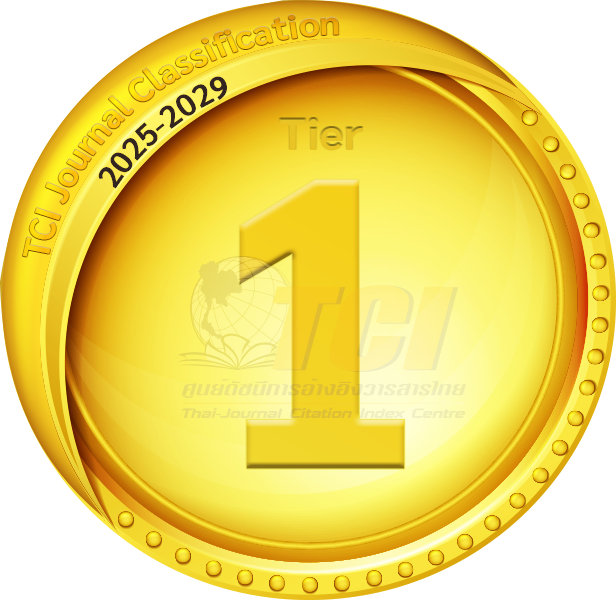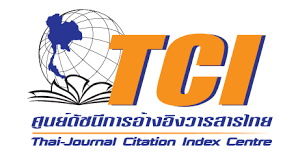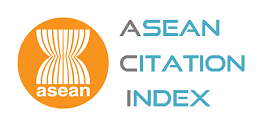Fashion Clothing and Garment as Communication: The Case of Batik 3 Negeri Solo by Tjoa Family, the Popular Choice of the Sundanese Ménak’s Taste, Priangan, Indonesia
- Sandy Rismantojo, Faculty of Decorative Arts, Doctor of Philosophy in Design Arts (International Program), Silpakorn University, Bangkok 10200, Thailand & Faculty of Arts and Design, Bachelor Program in Visual Comm, Corresponding Author, email: rismantojo_s2@su.ac.th
- Veerawat Sirivesmas, Faculty of Decorative Arts, Doctor of Philosophy in Design Arts (International Program), Silpakorn University, Bangkok 10200, Thailand
- Eakachat Joneurairatana, Faculty of Decorative Arts, Doctor of Philosophy in Design Arts (International Program), Silpakorn University, Bangkok 10200, Thailand
Abstract
Fashion, clothing, and garments are nonverbal communication media. As a garment, batik has been an important part of the nonverbal communication process since the days of the ancient Mataram Kingdom. This study aimed to examine how fashion, as Barnard's communication, Saussure's semiotic theory, and Bourdieu's theory of taste, dissects the popularity of Batik 3 Negeri Solo by the Tjoa family. Furthermore, it focused on the batik's vital role in communicating social roles and status, as well as social and economic values to political symbols. In 1910, the Tjoa family from Surakarta began to produce the batik Tiga Negeri, branding it as Batik 3 Negeri Solo. According to one expert, the Tjoa family's batik became the first choice of the Ménak Priangan as gifts for their subjects at the beginning of the 20th century because of the motif's beauty, complexity, and high production quality. Therefore, the Batik 3 Negeri by the Tjoa family became well-known and sought-after by the Sundanese in Priangan, West Java, because it also represents a high social class's taste and lifestyle for the Sundanese. The results reveal the factors making the Tjoa family's Tiga Negeri batik highly reputable and popular in Priangan, West Java, Indonesia.
Keywords: Fashion, Communication, Ménak, Tiga Negeri Batik, Tjoa family
References
Alisjahbana, T. (2018). The True Stories Behind Batik Tiga Negeri or Three Counties Batik. Independent Observer. Retrieved from https://observerid.com/the-true-stories-behind-batik-tiga-negeri-or-three-counties-batik/
Asa, K. (2014). Mosaic of Indonesian Batik. Jakarta, Indonesia: Red & White Publishing.
Aziz, J. B., & Hashim, F. (2021). Rhetoric of Food Authenticity and National Identity in the New Media. GEMA Online Journal of Language Studies, 21(2), 253-272. http://doi.org/10.17576/gema-2021-2102-14
Barnard, M. (2002). Fashion as Communication. London, UK: Routledge. https://doi.org/10.4324/9781315013084
Barnard, M. (2013). Fashion as Communication Second Edition. London, UK: Routledge. https://play.google.com/books/reader?id=QRKOAQAAQBAJ&pg=GBS.PT2&hl=id
Barnard, M., Ibrahim, I. S., & Iriantara, Y. (2011). Fashion sebagai Komunikasi: Cara mengkomunikasikan Identitas Sosial, Seksual, Kelas, dan Gender. Yogyakarta, Indonesia: Jalasutra
Bourdieu, P. (1987). Distinction: A Social Critique of the Judgement of Taste. Cambridge, US: Harvard University Press.
Bourdieu, P. (1998). Practical reason: On the Theory of Action. California, US: Stanford University Press.
De Saussure, F. (2011). Course in general linguistics. New York, US: Columbia University Press.
Djoemena, N. S. (1990). Ungkapan Sehelai Batik, Its Mystery and Meaning. Jakarta, Indonesia: Penerbit Djambatan.
Elliott, I. M. (2010). Batik: Fabled Cloth of Java. North Clarendon, US: Tuttle Publishing.
Gratha, B. (2018). Batik Tiga Negeri Solo: Sebuah Legenda. Jawa Tengah, Indonesia: Komunitas Peranakan Indonesia.
Hall, S. (Ed.). (1997). Representation: Cultural Representations and Signifying Practices (Vol. 2). California, US: Sage.
Hasyim, M. (2016). Fashion Sebagai Komunikasi: Analisis Semiotis Atas Fashion Jokowi Pada Pemilihan Presiden 2014. International Conference on Multidisciplinary Research (ICMR 2016) Universitas Hasanuddin, Indonesia
Heringa, R., & Veldhuisen, H. (1996). Fabric of Enchantment: Batik from the North Coast of Java: from the Inger McCabe Elliott Collection at the Los Angeles County Museum of Art. Weatherhill, Incorporated.
Hout, I. V. (2001). Batik: drawn in wax: 200 years of batik art from Indonesia in the Tropenmuseum collection. Amsterdam, Netherlands: Royal Tropical Institute.
Huang, X. (2019). Understanding Bourdieu - Cultural Capital and Babitus. Review of European Studies, 11(3), 45-49. https://doi.org/10.5539/res.v11n3p45
Ikatten. (n.d). UNESCO and Indonesian Batik. Retrieved from https://www.ikatten.com/?page_id=6764
Karmila, M., & Widiaty, I. (2016, April). Uncovering Sundanese Values by Analyzing Symbolic Meaning of Ménak Priangan Clothing (1800-1942). International Conference on Innovation in Engineering and Vocational Education. Bandung, Indonesia. https://iopscience.iop.org/article/10.1088/1757-899X/128/1/012050
Laksmi, V. K. P. (2010). Simbolisme motif batik pada budaya tradisional Jawa dalam perspektif politik dan religi. Ornamen, 7(1), 73-84. https://doi.org/10.33153/ornamen.v7i1.941
Lee, T. (2016). Defining the aesthetics of the Nyonyas’ batik sarongs in the straits settlements, late nineteenth to early twentieth century. Asian Studies Review, 40(2), 173-191. https://doi.org/10.1080/10357823.2016.1162137
Lestari, S. B. (2014). Fashion sebagai Komunikasi Identitas Sosial di Kalangan Mahasiswa. Jurnal Pengembangan Humaniora, 14(3), 225-238.
Lubis, N. H. (1998). Kehidupan kaum ménak Priangan, 1800-1942. Jawa Barat, Indonesia: Pusat Informasi Kebudayaan Sunda.
Lukman, C. C. (2016). Hibriditas Citarasa Mahasiswa Indonesia-Tionghoa Pada Karya Desain Grafis [Doctoral dissertation], Institut Teknologi Bandung Indonesia].
Malagina, A. (2018). Adiwastra Tiga Negri. National Geographic Indonesia. Retrieved from https://nationalgeographic.grid.id/read/13312484/adiwastra-tiga-negeri#google_vignette
Martini, M. (2003). Kaidah-kaidah Seni dan Cinta Seni. Jurnal Basis, (11-12), 41-50.
Ministry of Trade of the Republic of Indonesia. (2008). Indonesian Batik: A Cultural Beauty. Retrieved from https://www.scribd.com/document/137007001/Indonesia-Batik-A-Cultural-Beauty
Rahmawati, N. M. (2020). Fashion Sebagai Komunikasi: Analisa Semiotika Roland Barthes Pada Fashion Agus Harimurti Yudhoyono (Ahy): Dalam Pemilihan Gubernur Jakarta. KREDO: Jurnal Ilmiah Bahasa dan Sastra, 4(1), 216-233. https://doi.org/10.24176/kredo.v4i1.4903
Roojen, P. V. (2001). Batik Design. Amsterdam, Netherlands: The Pepin Press BV.
Rusmana, T. (2017). Implementasi Nilai-Nilai Konsep Tritangtu Sunda sebagai Metodelogi Penciptaan Teater Kontemporer. Prosiding: Seni, Teknologi, dan Masyarakat, (2), 84-99. https://dipro.isi-ska.ac.id/index.php/SemHas/article/view/37
Saavreda, H. (2016, May 3). Tri Tangtu. Budaya Indonesia. Retrieved from https://budaya-indonesia.org/Tri-Tangtu/
Suliyati, T., & Yuliati, D. (2019). Pengembangan motif batik semarang untuk penguatan identitas budaya Semarang. Jurnal Sejarah Citra Lekha, 4(1), 61-73. https://doi.org/10.14710/jscl.v4i1.20830
Trisnawati, T. Y. (2016). Fashion sebagai bentuk ekspresi diri dalam komunikasi. Jurnal The Messenger, 3(2), 36-47. http://dx.doi.org/10.26623/themessenger.v3i2.268
Veldhuisen, H. C., Setiadi, A., & Laksono, D. (2007). Batik Belanda 1840-1940: Pengaruh belanda pada batik dari Jawa sejarah dan kisah-kisah di sekitarnya. Jakarta, Indonesia: Gaya Favorit Press.
Wiryomartono, B. (2016). Javanese Culture and the Meanings of Locality: Studies on the Arts, Urbanism, Polity, and Society. London, UK: Lexington Books.

Indexed in


Search